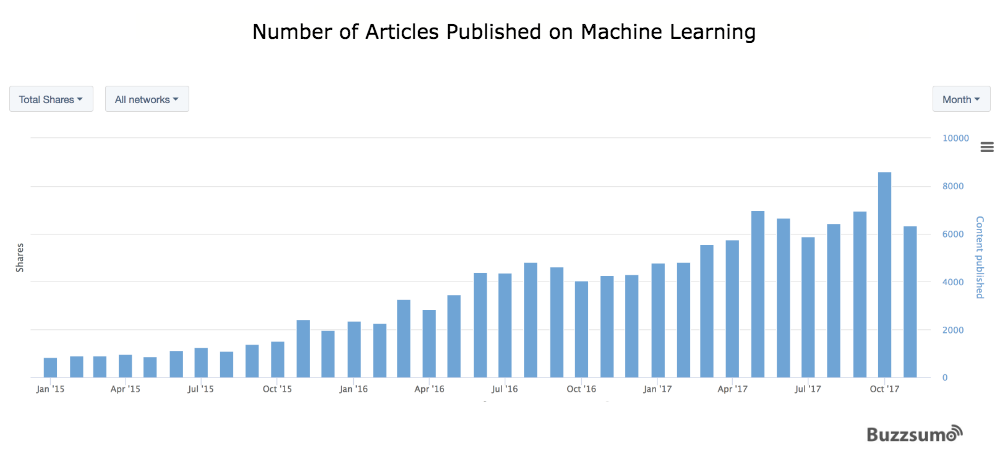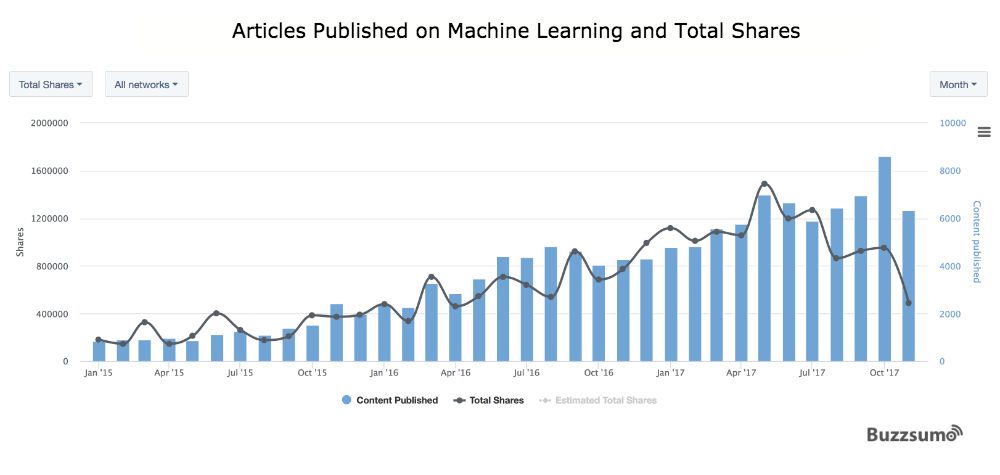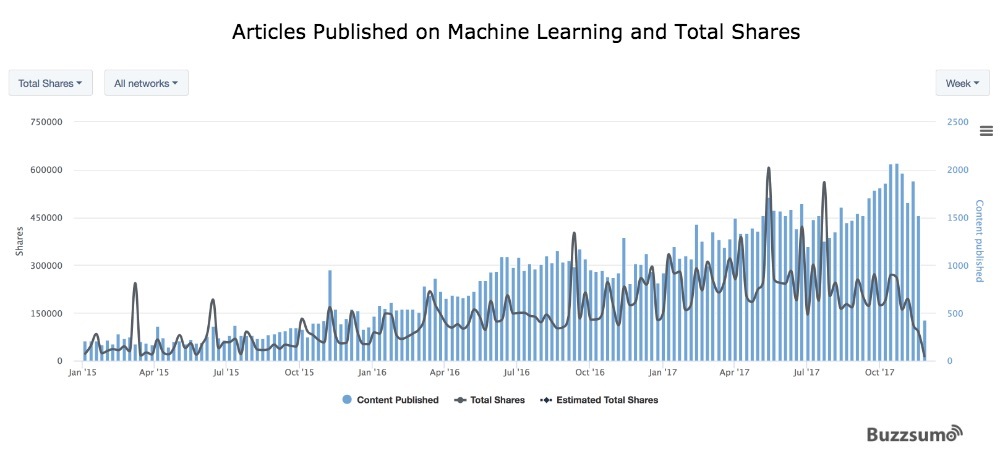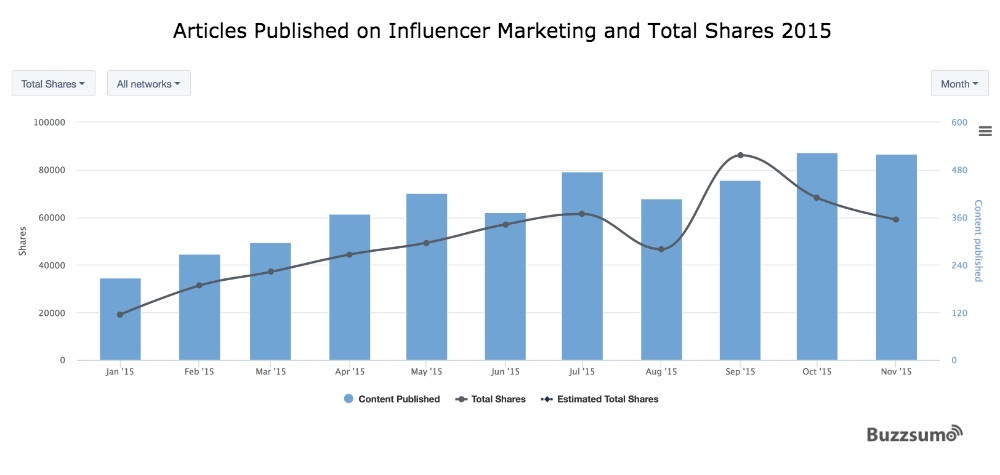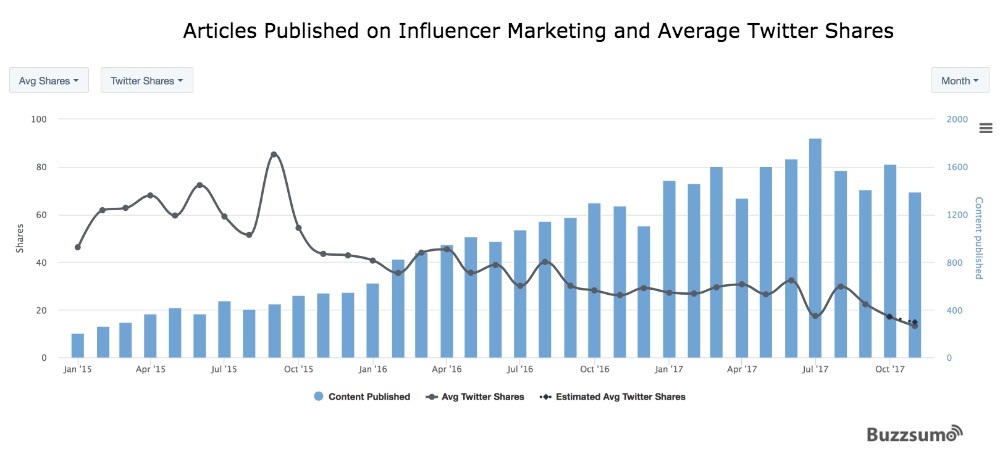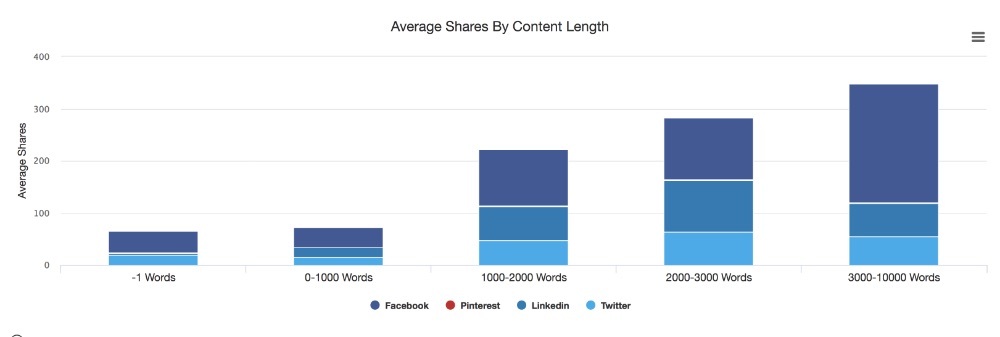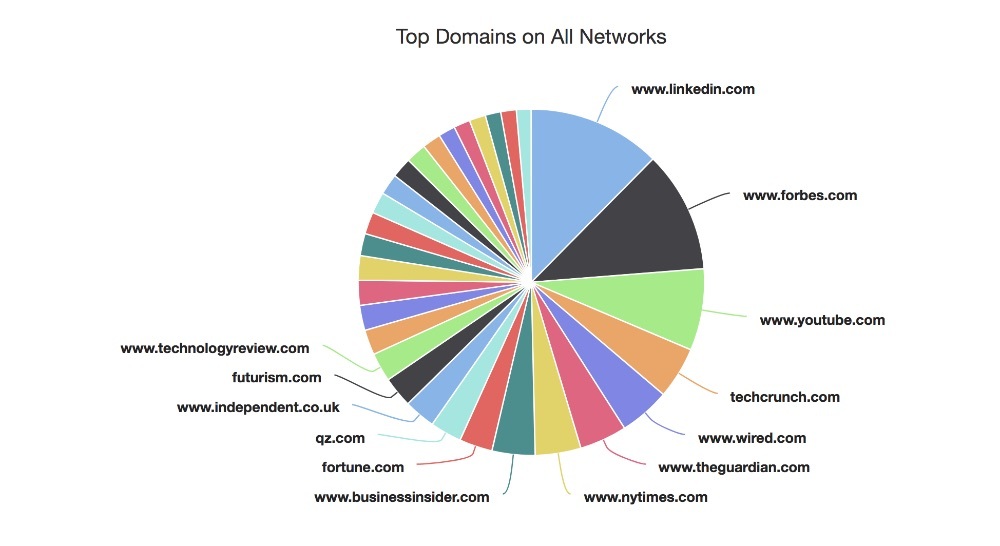Content marketing is hard work. It can feel like pushing a rock uphill some days. You have to consistently publish quality content and there is a danger that if you stop or change, you may lose the gains you have already made and roll back down. And everyone’s racing their own rocks up the same hill.
How to win? Your content strategy will be more effective if you understand the content trends in your industry and act faster than your competitors. And there may be shortcuts to the top: For example, identifying the new opportunities and avoiding very saturated and competitive content areas. In shaping your content strategy you will want to answer questions such as:
- Is this topic area saturated with content? How many articles are being published each week? How can we stand out?
- What are the emerging topics or content areas where engagement is growing?
- What post types are gaining the most traction and on which social networks?
- Has interest in this topic peaked, as measured by shares, or should I act quickly to take advantage of growing interest?
- Are average shares declining or increasing for specific topics and formats?
- In which niche areas and networks do I have the best chance of gaining attention and engagement with my content?
In this post we explore how you can answer these questions with BuzzSumo’s new content trends chart and how to develop a strategy that is appropriate for your content area.
Ideally we all want to be masters at trend spotting and be early in publishing relevant content. First mover advantage matters in content marketing. We equally want to avoid joining a ‘me too’ bandwagon in areas saturated with content and where average shares are falling. Where a topic area is saturated with content you need to adopt a very different strategy with a greater emphasis on quality content and promotion. So let’s look at how you can quickly review content trends.
Analysing Content Trends with BuzzSumo
With BuzzSumo’s new content analysis charts you can simply enter the topic you are interested in, and we will show you both the number of articles being published and the total number of shares over time.
Try out the New Content Analysis Charts!
In the example below I used the topic ‘Machine learning’. The chart shows that the volume of content being published about machine learning has increased significantly since 2015.
The interest in the topic, as measured by total shares, has also increased. There were over 1.5m shares of content published in May 2017, as we can see below.
The BuzzSumo chart shows you total shares and the volume of content by default. You can remove either item by clicking on the name of the item below the chart.
You can also switch to a weekly view by using the top right drop down. Below is the weekly view for machine learning.
We might be interested in why total shares peaked in the week of July 23rd, 2017. By simply clicking on this point in the chart BuzzSumo brings up the most shared articles published that week as we can see below.
We can see that the big story that week was about a Facebook chat bot which had to be shut down. That article got over 300,000 engagements.
Since May we can see that total shares have been falling, however, the volume of content published about machine learning has continued to increase. The consequence of these two trends is that average shares per post has been falling as we can see below. To switch to average shares we just use the top left drop down.
Depending on your BuzzSumo plan, our content analysis charts allow you to look back and plot trends over the past three years. So you can see if a trend is still on the rise and worth tapping into, or if it’s jumped the shark and you should back off and try a different tactic.
Common Content Trends
What we typically see at BuzzSumo is that as interest in a topic grows, the number of articles published about that topic increases and both the total shares and average shares of those articles also increase. This is when a trend is having its moment. We can see this below for articles published about influencer marketing in 2015.
However, as interest grows, the volume of content published typically outpaces interest, leading to falling total shares and significantly lower average shares, as we can see below.
We refer to this as the ‘content shock’ pattern, borrowing Mark Schaefer’s term. In essence, over time, topic areas become saturated with content. Think carefully before piling in on these topics. Unless you have something very different to say, you may be wasting your time.
Spotting Content Opportunities
Ideally we want to be publishing content early in the content cycle where interest and engagement is growing. It is far easier to gain traction with your content in these areas than in areas saturated with content because you’re educating people in a topic that’s gaining momentum – a great way to build expertise and visibility. More importantly you need a different content strategy depending on whether you are early in a content cycle or late. The later you are the more important it is to produce very high quality content and to spend more time on promoting your content.
Using the BuzzSumo content trends chart, you can quickly assess what is happening in any topic area. You can also refine your analysis to look for specific opportunities which may include:
- Growing engagement on specific networks
- Interest in sub-topics for example, interest in artificial intelligence and job losses rather than artificial intelligence per se.
- High levels of interest in specific content formats such as long form, comprehensive articles or videos.
The BuzzSumo content analysis reports help us refine our content strategy in this way. For example, if we take artificial intelligence, we can see that videos, list posts and why posts outperform other post types. We can also see that videos are particularly popular on Facebook.
The analysis report also shows us that long form content gets more shares on AI.
We can see which sites are getting the most shares for their articles on AI. Interestingly articles published about artificial intelligence on LinkedIn.com get more shares in total than articles published on other domains. This may reflect growing interest in the business applications of artificial intelligence and may lead us to publish more content directly on LinkedIn as it’s become more of a primary source.
All of this research and analysis informs your content strategy. For example:
Strategic Tasks Early In a Content Cycle
If you are early in the content cycle where interest and engagement is growing you will want to focus on building your authority, reputation and trust quickly. Thus core tasks might include:
- Developing an evergreen content strategy including, for example, “what is” content or lists of resources. Be the best answer while people are asking the basic questions.
- Creating authoritative content based on research and evidence to enhance your reputation. If nobody’s a clear expert in the topic yet, that’s your opportunity.
- Increasing your content production to provide less opportunity for new entrants. Own the topic. HubSpot did this very effectively with Inbound Marketing when it was a growing term.
- Experiment with different types of content. For inspiration, read our guide on what are the top 5 types of blog posts for killer engagement rates.
Strategic Tasks Late In a Content Cycle
If you are entering an area saturated with content your strategic tasks might include:
- Developing exceptional content. Less is more when it comes to content production late in a content cycle. Another “me too” list post will not gain any traction. You need very high quality content including research based content and long form content or very high production value content such as videos or interactive content that will help you to stand out.
- Identifying specific niches or networks where content is still gaining traction. Average shares may be declining overall but increasing on a specific network such as LinkedIn for content that is business focused. An example is driverless cars where very business focused content is gaining a lot of attention despite huge volumes of general content being published.
- Creating an effective promotion and amplification strategy, including paid promotion. Late in the content cycle you may need to spend as much or more time on content promotion than on content creation. In our experience it is better to focus all of your promotion on a single day to become the story for the day rather than spreading your promotion and amplification efforts over aa few days or weeks.
You don’t have to push that rock on your own. Let us share the load: Why not carry out an analysis of the content trends in your industry today using BuzzSumo’s content analysis tools.
Categories
BuzzSumo ToolsCategories
BuzzSumo ToolsThe Monthly Buzz⚡
Subscribe to BuzzSumo's monthly newsletter to:
Stay up-to-date with the best of the best in content marketing 📝
Get data-informed content, tips and tidbits insights first 👩🏻💻
Read top shared content by top marketing geeks 🤓
Try
Enter any topic, term or url to search to see BuzzSumo in action. It’s free!
100% free. No credit card required.
